Background
He was the younger son of Thomas Watson (1672–1753), was born in August 1737 (baptised 25 September) at Heversham, Westmoreland, where his father, a clergyman, was master (1698–1737) of the grammar school.


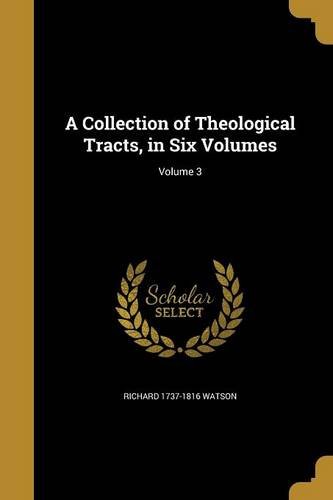
( This work has been selected by scholars as being cultur...)
This work has been selected by scholars as being culturally important, and is part of the knowledge base of civilization as we know it. This work was reproduced from the original artifact, and remains as true to the original work as possible. Therefore, you will see the original copyright references, library stamps (as most of these works have been housed in our most important libraries around the world), and other notations in the work. This work is in the public domain in the United States of America, and possibly other nations. Within the United States, you may freely copy and distribute this work, as no entity (individual or corporate) has a copyright on the body of the work. As a reproduction of a historical artifact, this work may contain missing or blurred pages, poor pictures, errant marks, etc. Scholars believe, and we concur, that this work is important enough to be preserved, reproduced, and made generally available to the public. We appreciate your support of the preservation process, and thank you for being an important part of keeping this knowledge alive and relevant.
http://www.amazon.com/gp/product/1361501820/?tag=2022091-20
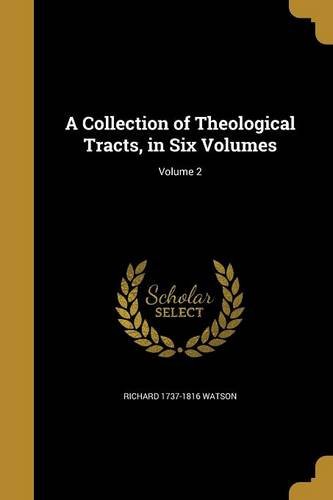
( This work has been selected by scholars as being cultur...)
This work has been selected by scholars as being culturally important, and is part of the knowledge base of civilization as we know it. This work was reproduced from the original artifact, and remains as true to the original work as possible. Therefore, you will see the original copyright references, library stamps (as most of these works have been housed in our most important libraries around the world), and other notations in the work. This work is in the public domain in the United States of America, and possibly other nations. Within the United States, you may freely copy and distribute this work, as no entity (individual or corporate) has a copyright on the body of the work. As a reproduction of a historical artifact, this work may contain missing or blurred pages, poor pictures, errant marks, etc. Scholars believe, and we concur, that this work is important enough to be preserved, reproduced, and made generally available to the public. We appreciate your support of the preservation process, and thank you for being an important part of keeping this knowledge alive and relevant.
http://www.amazon.com/gp/product/1361496711/?tag=2022091-20
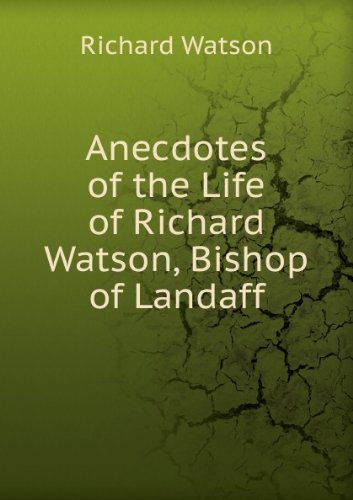
(FACSIMILE: Reproduction Anecdotes of the life of Richard ...)
FACSIMILE: Reproduction Anecdotes of the life of Richard Watson, Bishop of Llandaff FACSIMILE Originally published by London printed for T. Cadell and W. Davies, by J. M'Creery in 1817. Book will be printed in black and white, with grayscale images. Book will be 6 inches wide by 9 inches tall and soft cover bound. Any foldouts will be scaled to page size. If the book is larger than 1000 pages, it will be printed and bound in two parts. Due to the age of the original titles, we cannot be held responsible for missing pages, faded, or cut off text. 568 pages.
http://www.amazon.com/gp/product/B0068IUHZG/?tag=2022091-20

(This is a reproduction of a book published before 1923. T...)
This is a reproduction of a book published before 1923. This book may have occasional imperfections such as missing or blurred pages, poor pictures, errant marks, etc. that were either part of the original artifact, or were introduced by the scanning process. We believe this work is culturally important, and despite the imperfections, have elected to bring it back into print as part of our continuing commitment to the preservation of printed works worldwide. We appreciate your understanding of the imperfections in the preservation process, and hope you enjoy this valuable book.
http://www.amazon.com/gp/product/1178891615/?tag=2022091-20
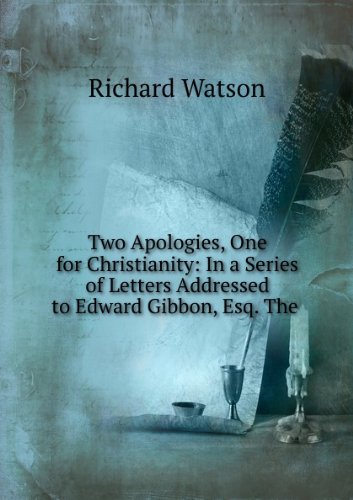
(High Quality FACSIMILE REPRODUCTION: :Watson, Richard, 17...)
High Quality FACSIMILE REPRODUCTION: :Watson, Richard, 1737-1816 :Two Apologies, One For Christianity, In A Series Of Letters Addressed To Edward Gibbon, Esq. The Other For The Bible, In Answer To Thomas Paine :1816 :Facsimile: Originally published by London : Printed for Scatcherd and Letterman in 1816. Book will be printed in black and white, with grayscale images. Book will be 6 inches wide by 9 inches tall and soft cover bound. Any foldouts will be scaled to page size. If the book is larger than 1000 pages, it will be printed and bound in two parts. Due to the age of the original titles, we cannot be held responsible for missing pages, faded, or cut off text.
http://www.amazon.com/gp/product/B004G4V78K/?tag=2022091-20
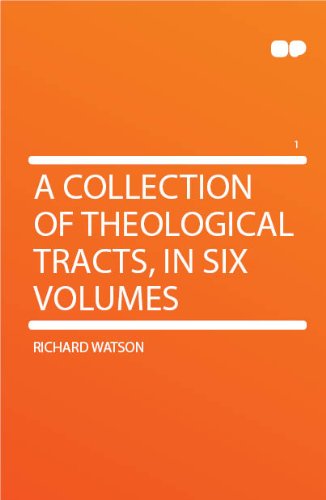
(High Quality FACSIMILE REPRODUCTION: Watson, Richard, 173...)
High Quality FACSIMILE REPRODUCTION: Watson, Richard, 1737-1816 :A Collection Of Theological Tracts, In Six Volumes :1791 :Facsimile: Originally published by London : Printed for T. Evans etc. in 1791. Book will be printed in black and white, with grayscale images. Book will be 6 inches wide by 9 inches tall and soft cover bound. Any foldouts will be scaled to page size. If the book is larger than 1000 pages, it will be printed and bound in two parts. Due to the age of the original titles, we cannot be held responsible for missing pages, faded, or cut off text.
http://www.amazon.com/gp/product/B007QADTA0/?tag=2022091-20
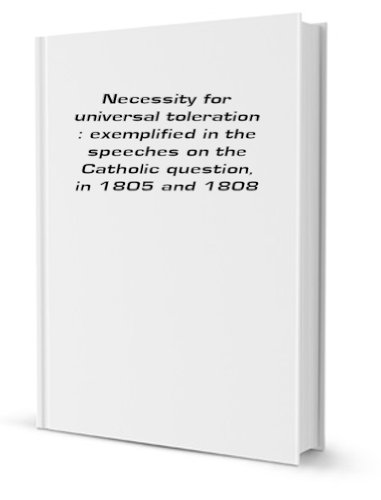
(FACSIMILE: Reproduction Necessity for universal toleratio...)
FACSIMILE: Reproduction Necessity for universal toleration : exemplified in the speeches on the Catholic question, in 1805 and 1808 FACSIMILE Originally published by London : T. Cadell and W. Davies in 1808. Book will be printed in black and white, with grayscale images. Book will be 6 inches wide by 9 inches tall and soft cover bound. Any foldouts will be scaled to page size. If the book is larger than 1000 pages, it will be printed and bound in two parts. Due to the age of the original titles, we cannot be held responsible for missing pages, faded, or cut off text. 240 pages.
http://www.amazon.com/gp/product/B008MYQ4QA/?tag=2022091-20
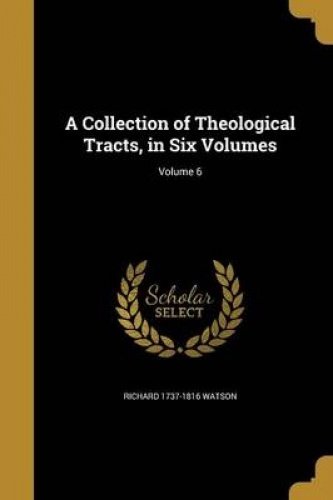
( This work has been selected by scholars as being cultur...)
This work has been selected by scholars as being culturally important, and is part of the knowledge base of civilization as we know it. This work was reproduced from the original artifact, and remains as true to the original work as possible. Therefore, you will see the original copyright references, library stamps (as most of these works have been housed in our most important libraries around the world), and other notations in the work. This work is in the public domain in the United States of America, and possibly other nations. Within the United States, you may freely copy and distribute this work, as no entity (individual or corporate) has a copyright on the body of the work. As a reproduction of a historical artifact, this work may contain missing or blurred pages, poor pictures, errant marks, etc. Scholars believe, and we concur, that this work is important enough to be preserved, reproduced, and made generally available to the public. We appreciate your support of the preservation process, and thank you for being an important part of keeping this knowledge alive and relevant.
http://www.amazon.com/gp/product/1361520426/?tag=2022091-20

(FACSIMILE REPRODUCTION: 1785A collection of theological t...)
FACSIMILE REPRODUCTION: 1785A collection of theological tracts FACSIMILE Originally published by Cambridge : Printed by J. Archdeacon, printer to the University; for J. & J. Merrill, Cambridge; T. Evans, London; and J. and J. Fletcher, Oxford, 1785 in 1785. Book will be printed in black and white, with grayscale images. Book will be 6 inches wide by 9 inches tall and soft cover bound. Any foldouts will be scaled to page size. If the book is larger than 1000 pages, it will be printed and bound in two parts. Due to the age of the original titles, we cannot be held responsible for missing pages, faded, or cut off text. 556 pages.
http://www.amazon.com/gp/product/B007OQ8TWY/?tag=2022091-20
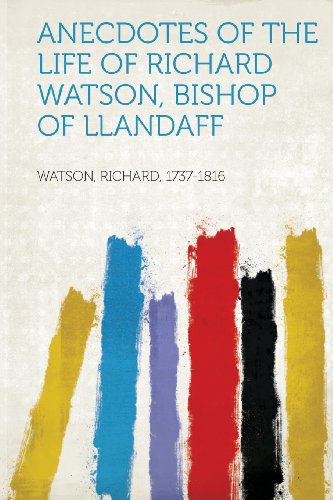
(Unlike some other reproductions of classic texts (1) We h...)
Unlike some other reproductions of classic texts (1) We have not used OCR(Optical Character Recognition), as this leads to bad quality books with introduced typos. (2) In books where there are images such as portraits, maps, sketches etc We have endeavoured to keep the quality of these images, so they represent accurately the original artefact. Although occasionally there may be certain imperfections with these old texts, we feel they deserve to be made available for future generations to enjoy.
http://www.amazon.com/gp/product/1314119958/?tag=2022091-20
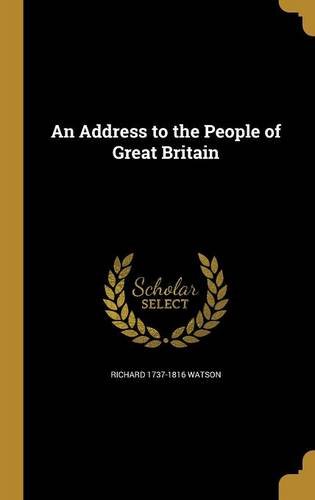
( This work has been selected by scholars as being cultur...)
This work has been selected by scholars as being culturally important, and is part of the knowledge base of civilization as we know it. This work was reproduced from the original artifact, and remains as true to the original work as possible. Therefore, you will see the original copyright references, library stamps (as most of these works have been housed in our most important libraries around the world), and other notations in the work. This work is in the public domain in the United States of America, and possibly other nations. Within the United States, you may freely copy and distribute this work, as no entity (individual or corporate) has a copyright on the body of the work. As a reproduction of a historical artifact, this work may contain missing or blurred pages, poor pictures, errant marks, etc. Scholars believe, and we concur, that this work is important enough to be preserved, reproduced, and made generally available to the public. We appreciate your support of the preservation process, and thank you for being an important part of keeping this knowledge alive and relevant.
http://www.amazon.com/gp/product/1360116389/?tag=2022091-20

( This work has been selected by scholars as being cultur...)
This work has been selected by scholars as being culturally important, and is part of the knowledge base of civilization as we know it. This work was reproduced from the original artifact, and remains as true to the original work as possible. Therefore, you will see the original copyright references, library stamps (as most of these works have been housed in our most important libraries around the world), and other notations in the work. This work is in the public domain in the United States of America, and possibly other nations. Within the United States, you may freely copy and distribute this work, as no entity (individual or corporate) has a copyright on the body of the work. As a reproduction of a historical artifact, this work may contain missing or blurred pages, poor pictures, errant marks, etc. Scholars believe, and we concur, that this work is important enough to be preserved, reproduced, and made generally available to the public. We appreciate your support of the preservation process, and thank you for being an important part of keeping this knowledge alive and relevant.
http://www.amazon.com/gp/product/1360387951/?tag=2022091-20
He was the younger son of Thomas Watson (1672–1753), was born in August 1737 (baptised 25 September) at Heversham, Westmoreland, where his father, a clergyman, was master (1698–1737) of the grammar school.
On 3 November 1754 he was admitted a sizar of Trinity College, Cambridge. He early made a good impression by a clever criticism of an argument in Clarke on the ‘Attributes, ’ and gained a scholarship on 2 May 1757, a year before the usual time, winning the special favour of the master, Robert Smith (1689–1768). He graduated B. A. in January 1759 as second wrangler. His examination entitled him to the first place, but ‘the talk about’ the injustice done him proved ‘more service than if’ he ‘had been made senior wrangler. ’
On 1 October 1760 he was elected fellow. In 1762 he proceeded M. A. , was made moderator (10 October) with John Jebb, and helped William Paley at a pinch by suggesting the insertion of a ‘non’ in his proposed thesis.
About the same time he had the offer of the post of chaplain to the factory at Bencoolen, in the Straits Settlements. " You are too good, " said the master of Trinity, " to die of drinking punch in the torrid zone "; and Watson, instead of becoming, as he had flattered himself, a great orientalist, remained at home to be elected professor of chemistry, a science of which he did not at the time possess the simplest rudiments.
Not the least of his services was to procure an endowment for the chair, which served as a precedent in similar instances. In 1771 he was appointed regius professor of divinity, but did not entirely renounce the study of chemistry.
In 1781 he followed this up with an introductory manual of Chemical Essays. In 1776 he answered Gibbon's chapters on Christianity, and had the honour of being one of the only two opponents whom Gibbon treated with respect.
He had always opposed the American War, and on the accession of Lord Shelburne to power in 1782 was made bishop of Llandaff, being permitted to retain his other preferments on account of the poverty of the see.
Shelburne expected great service from him as a pamphleteer, but Watson proved from the ministerial point of view a most impracticable prelate. He immediately brought forward a scheme for improving the condition of the poorer clergy by equalizing the incomes of the bishops, the reception of which at the time may be imagined, though it was substantially the same as that carried into effect by Lord Melbourne's government fifty years later.
Watson now found that he possessed no influence with the minister, and that he had destroyed his chance of the great object of his ambition, promotion to a better diocese.
Neglecting both his see and his professorship, to which latter he appointed a deputy described as highly incompetent, he withdrew to Calgarth Park, in his native county, where he occupied himself in forming plantations and in the improvement of agriculture. He also frequently came forward as a preacher and as a speaker in the House of Lords.
His advice to the government in 1787 is said to have saved the country £100, 000 a year in gunpowder. In 1796 he published, in answer to Thomas Paine, an Apology for the Bible, perhaps the best known of his numerous writings. Watson continued to exert his pen with vigour, and in general to good purpose, denouncing the slave trade, advocating the union with Ireland, and offering financial suggestions to Pitt, who seems to have frequently consulted him.
In 1798 his Address to the People of Great Britain, enforcing resistance to French arms and French principles, ran through fourteen editions, but estranged him from many old friends, who accused him, probably with injustice, of aiming to make his peace with the government.
Though querulous because of his non-preferment, De Quincey tells us that "his lordship was a joyous, jovial, and cordial host. "
He died on the 2nd of July 1816, having occupied his latter years in the composition and revision of an autobiography (published in 1817), which, with all its egotism and partiality, is a valuable work, and the chief authority for his life.
One of his discoveries led to the black-bulb thermometer. In 1768 he had published Inslilutiones metallurgicae, intended to give a scientific form to chemistry by digesting facts established by experiment into a connected series of propositions. In 1788 he was elected a Foreign Honorary Member of the American Academy of Arts and Sciences.
He contributed to the 'Philosophical Transactions' and to the 'Transactions' of the Manchester Literary and Philosophical Society, of which he was elected an honorary member on 18 December 1782; these papers are included in the 'Chemical Essays. '
(High Quality FACSIMILE REPRODUCTION: Watson, Richard, 173...)
(FACSIMILE: Reproduction Necessity for universal toleratio...)
(Unlike some other reproductions of classic texts (1) We h...)
(High Quality FACSIMILE REPRODUCTION: :Watson, Richard, 17...)
(FACSIMILE: Reproduction Anecdotes of the life of Richard ...)
( This work has been selected by scholars as being cultur...)
( This work has been selected by scholars as being cultur...)
( This work has been selected by scholars as being cultur...)
( This work has been selected by scholars as being cultur...)
( This work has been selected by scholars as being cultur...)
(FACSIMILE REPRODUCTION: 1785A collection of theological t...)
(This is a reproduction of a book published before 1923. T...)
The same year he offended the court by a Whig sefmon, but in 1779 became archdeacon of Ely.
Quotations: I buried myself, " he says, " in my laboratory, and in fourteen months read a course of chemical lectures to a very full audience. "
He was a member of the American Academy of Arts and Sciences from 1788 and a member of the Manchester Literary and Philosophical Society (1782).
In 1773, he married Dorothy Wilson, daughter of Edward Wilson of Dallam Tower and a descendant of the eponymous benefactor who had endowed Watson's scholarship.
